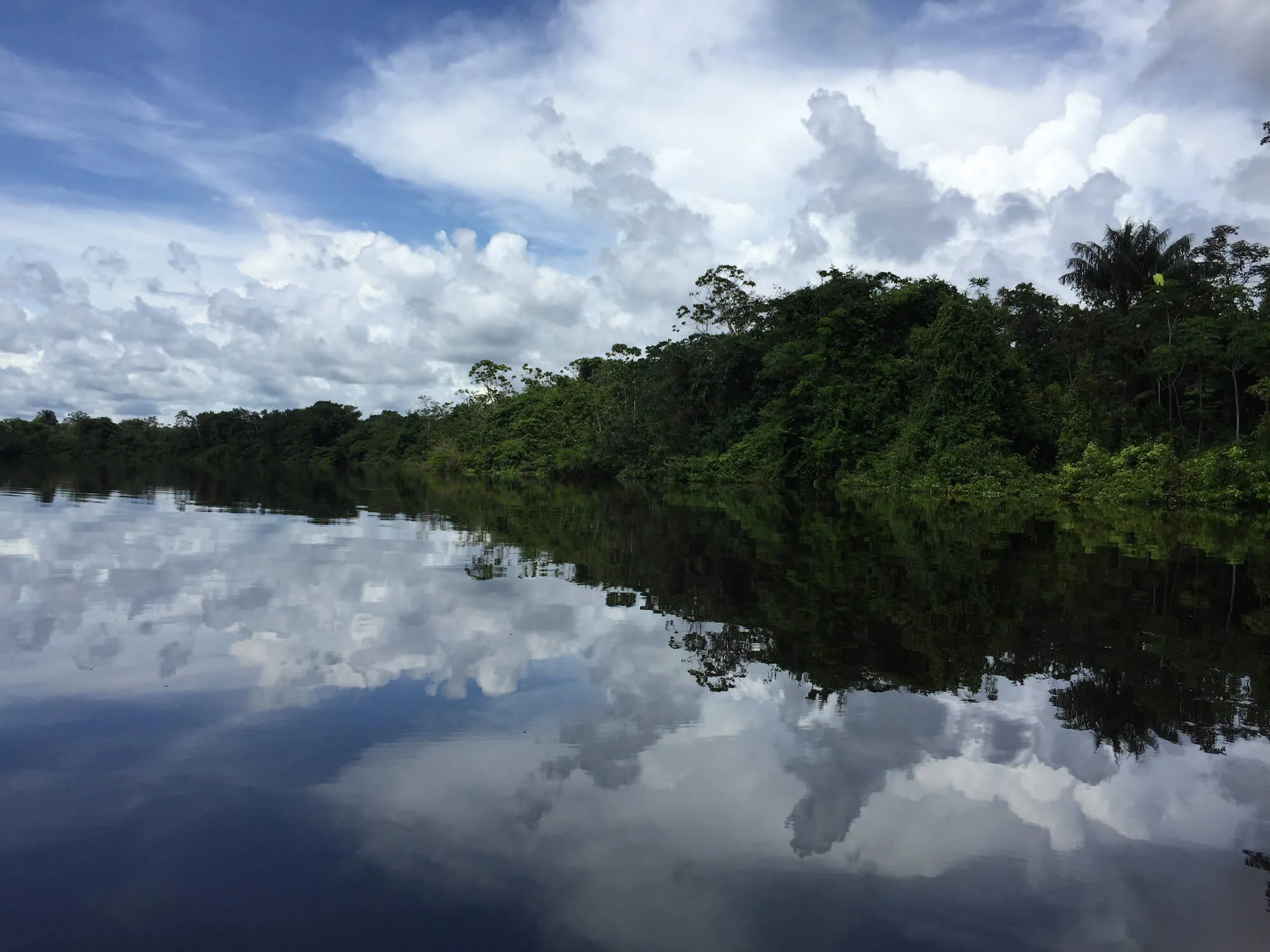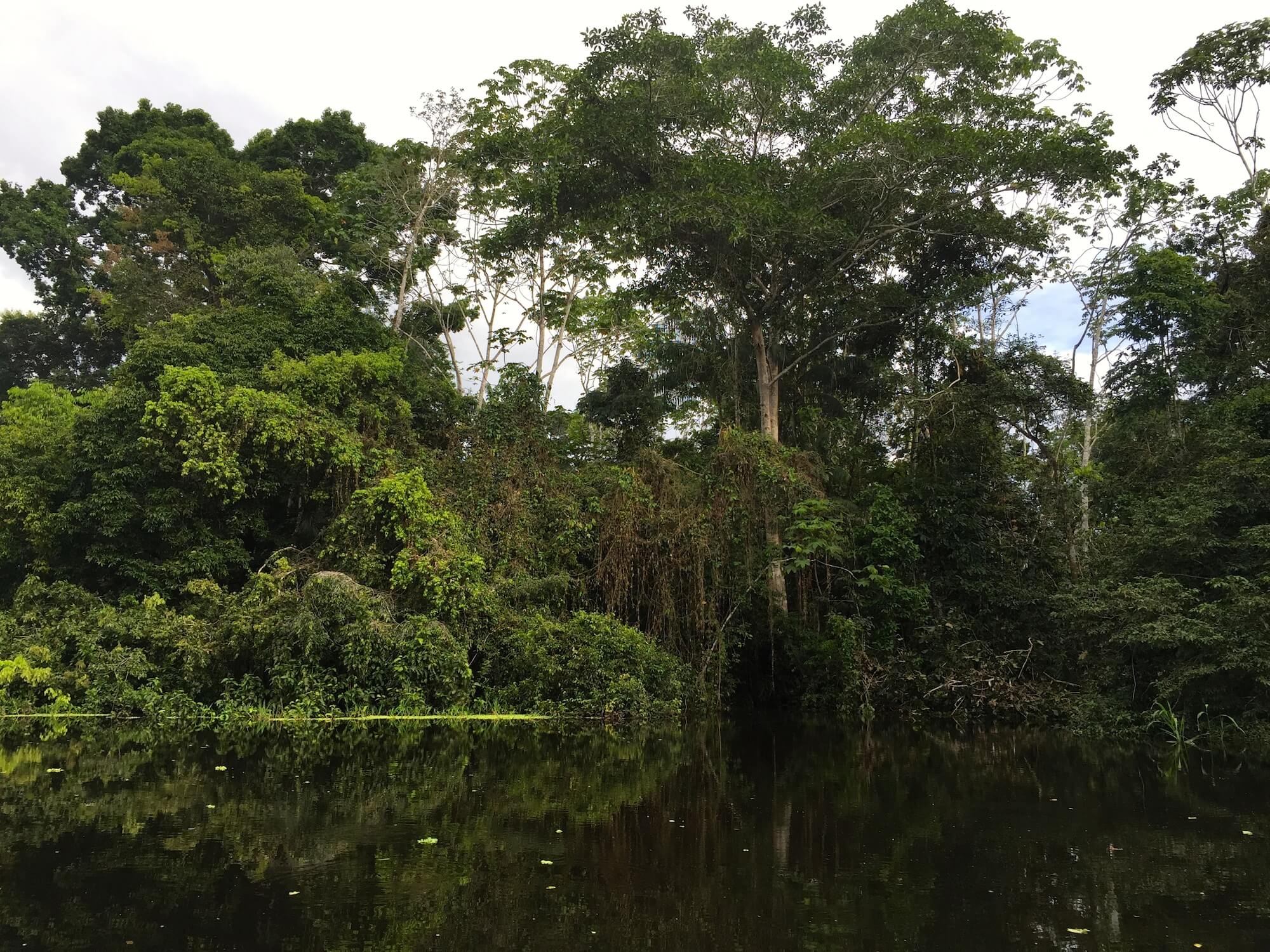A visit to the Amazon Rainforest is truly like nothing else. Perhaps it is our collective ancestral memories of our own species once roaming African rainforest, but something about being in a jungle seems to spark the human imagination and soul.
The Amazon Jungle, the lungs of our planet and by far the world’s largest rainforest, feels both mighty and powerful and at the same time a place of harmony.
Spread across the northern part of South America, the Amazon Jungle - more specifically the Amazon biome - is by far one of the most diverse places on earth.
It is estimated that the Amazon rainforest holds 15% of all land based plant species, 10% of all mammal species, and is similarly diverse when it comes to the countless amphibians and fish species of the river system. In any given hectare of native Amazonian rainforest, you can find up to 300 different tree species.
All this diversity has developed over millennia and along with the poisonous tree frogs and stinging plants, the jungle holds many beneficial plants and animals for the human species.
In fact, the Amazon Jungle is not quite as impenetrable as it seems and today you will find around 180 different native tribes sharing in the diversity and bounty the jungle has to offer.
Diversity is not just found in the plant and animal species of the Amazon but also in the diets of the Amazonian people.
Traditionally, before outside contact, Amazonian tribes were almost exclusively hunter-gathers. They would hunt jungle animals, fish in the rivers, and gather fruits, vegetables, and nuts from the rainforest around them.
Studies have shown that native tribes will routinely collect a vast range of plants for both medicinal uses and for food - up to 2,000 different species - and that they can identity even more.
While monocrops - like corn, wheat, and rice - became established food sources in many other world cultures, in the Amazon rainforest this trend of eating one item in abundance was almost non-existent until outside influences began to change the lifestyles of the Amazonian people.
Still today, you can find traditional tribes deep in the jungle that remain hunter-gathers with vast diversity in their diets and no monocrops to speak of.
Beyond these remote communities though, the modern Amazonian diet is a bit more settled.
Hunter-gather communities, in general, do not settle well. In order to not run out of food, communities need to relocate at least occasionally. In the Amazon, with its incredible abundance and diversity, communities weren’t as nomadic as in other hunter-gather societies but still rather mobile.
With the first outsider contacts though, this began to change. Whether it was due to societal changes - church missionary groups encouraging people to settle permanently near a new church - or conflict - being driven out of their lands by mining companies and new settlers - many Amazonian tribes transitioned from roaming hunter-gather to settled farming communities.
This change was significant to the Amazonian diet but diversity in food sources, even in settled communities remained high.
While the Amazon has plenty of larger towns and even a few cities nowadays, where a modern diet and large scale farming have become more normal, most indigenous Amazonians still live in smaller villages and multifamily groups practicing small-scale shifting cultivation farming.
With less available hunting lands and more settled communities, many Amazonian tribes have had to learn to supplement their hunter-gather diets with small slash-and-burn farming plots.
These plots are usually small, a half acre or so, are used to grow a variety of crops, more similar to a garden and unlike the modern monocrop style farming of the industrialized world, and are rotated out with other plots of land, allowing the soil to recover. Here they grow a mix of once foraged crops, like cassava (also called manioc), a tuberous root which is by far the Amazon's most staple crop, and other crops introduced to the region like corn, rice, and plantains.
In addition to their small farming lots, filled with high caloric staples, hunting and gathering still play a vital role and add a good deal of diversity to the modern Amazonian diet.
Bush meat provides necessary protein to the diet and usually consist of small Amazonian prey like armadillo, tapir, monkey, and the South American coati which is related to the raccoon.
Fishing is, obviously, an important source of food as well and the Amazon holds literally hundreds of edible fish species.
Particularly impressive is the paiche, a huge fish that can grow up to 450 pounds, and can easily feed a whole village.
Gathered fruits, vegetables, and seeds fill out the Amazonian diet with many of the staples now known in the Western world as “superfoods.” Fresh acai berries, camu camu fruit, sacha inchi seeds, and countless other plants are foraged from the jungle.
Besides plants, you will also find communities gathering the occasional snail, ant, or bug.
In general, the traditional Amazonian diet is focused on meat, fish, fruits, and a few vegetables, seeds, and nuts. Grains, other than a few newly imported options, are not as dominate and ground cassava root is the only real native flour option.
The diet seems to be filled with “superfoods” and they seem to help as traditional Amazonian tribes are incredibly healthy.
Besides food, many Amazonian plants have also been found to be incredibly valuable for medicinal uses. Even though it is estimated that less than 1% of all Amazonian plant species have been tested for health or medicinal properties, it seems every few months a new “miracle” fruit or plant is discovered.
In a place as diverse as the Amazon, in a region where traditional ways of life and eating habits have preserved well, it is not surprising that we continue to learn about the health benefits of the traditional Amazonian diet. Unfortunately, such discoveries are not always a benefit to the local communities.
As we race to export the newest “superfood,” companies in turn import more Western junk foods.
As the Amazon jungle continues to be burned and cut down to make way for industrialized fields of soya and cattle farms, native people are left with less land to forage.
Animals traditionally hunted for food are going from endangered to extinct as their habitats are cut down and reproductive rates drive down their population numbers.
Illegal mining operations poison the rivers, drastically reducing the number of fish.
The once mighty Amazon jungle seems now fragile and the traditional Amazonian way of life endangered.
Let us not forget what might be lost. The diversity of plants and animals, like no where on earth; countless medical and nutritional discovering yet to be made; a traditional way of life and diet that could turn the tables on the current health crisis of the Western world; the lungs of our planet and perhaps the key to avoiding a future climate disaster.
Caring about the Amazon is not just ordering an açaí bowl at your local cafe but understanding that this region of our world is essential to our collective futures.
From “superfoods” and a true example of a modern Paleo-diet to miracle cancer cures and future drug treatments, the Amazon still has much to teach us. Let us learn and let us take the steps now to preserve this knowledge for future generations - before it is too late.





